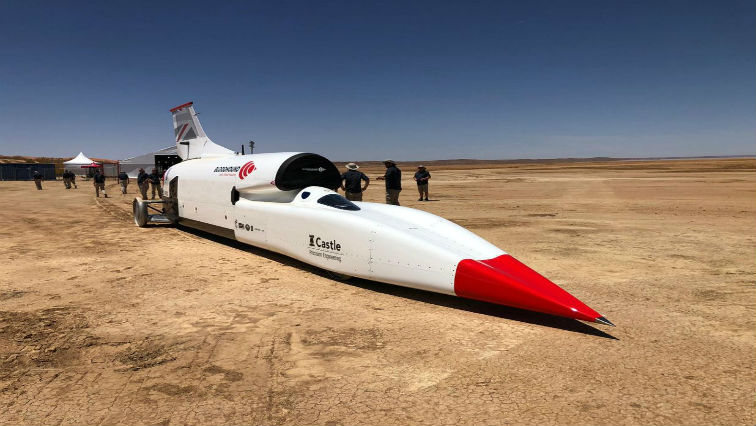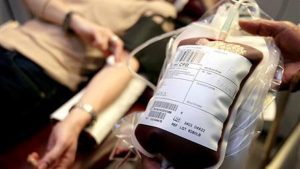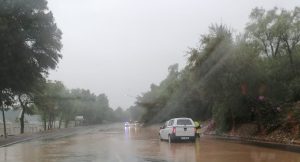The Bloodhound supersonic car came close to its expected high-speed testing of 800 km/h at Hakskeenpan near Upington in the Northern Cape.
However, the car sustained minor damage and engineers had to be roped in. They confirmed speed for the car is 786 km/h.
The supersonic car was officially launched last month at Hakskeenpan and it is expected to attempt its land speed record of 1600 km/h in 2020 on the pan.
Driver of the car Andy Green says the speed of the car is going very well.
He says it’s unfortunate they lost out on the expected speed for the day, but safety comes first.
“I was hoping to hit exactly 800, but there was a small hiccup with the speedo, so I tried to transfer to the backup speed in the car and it’s slightly difficult to read, so I just lifted a little bit early, because I was cautious, so we are ten to fifteen kilometres short. We wanted 800-kilomtres an hour, which is the target for today, then throttle back and let the car roll to actually coast and check and measure the aero-dynamic and rolling resistance drag on the car, not just for this year, but for next year for a land speed record.”
The scorching weather conditions prevent the car from being on the track for too long.
Owner of the Bloodhound, Ian Warhurst, says they’ve managed to get data from the car
“We’ve also got great news today, because our aero-data is now being collected, which is great news. So the engineers are sitting there with fingers poised over the laptops and just to analyse, so after each run we get the data to analyse that and we have a meeting to say that it’s all safe and we go to the next level, so that is what we are doing now. We keep going faster until we can go as far as we can, but we just have to go fast enough for this particular deployment,” says the Bloodhound owner.
Engineers also hope to inspire the next generation to pursue a career in the world of science, through this milestone.
The Bloodhound team once again praised the Northern Cape and the three hundred people who cleared the track for nearly ten years, making it the best racing surface in history for straight-line racing.
Watch video below:






